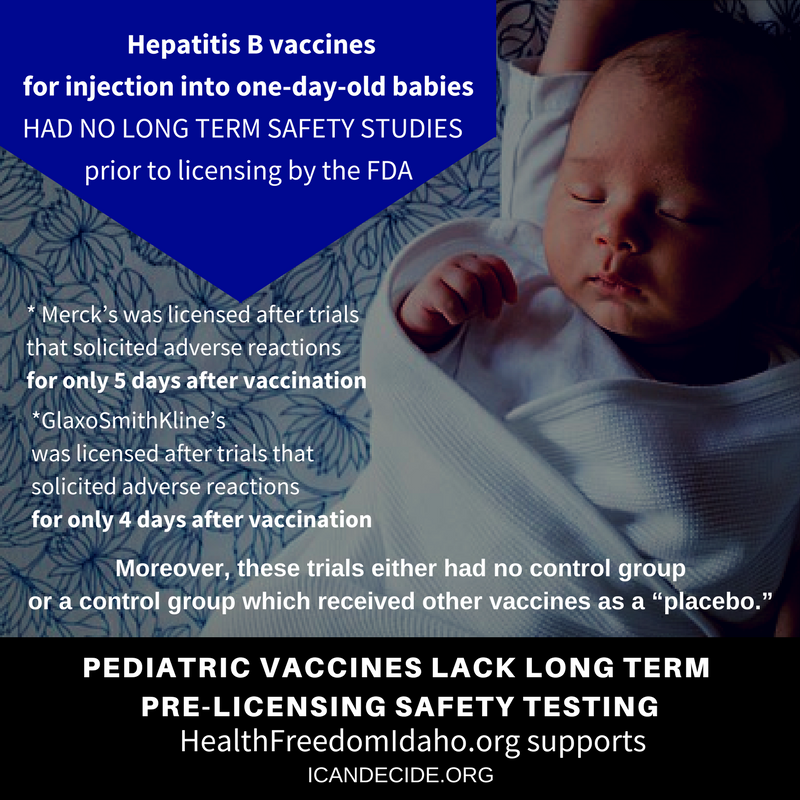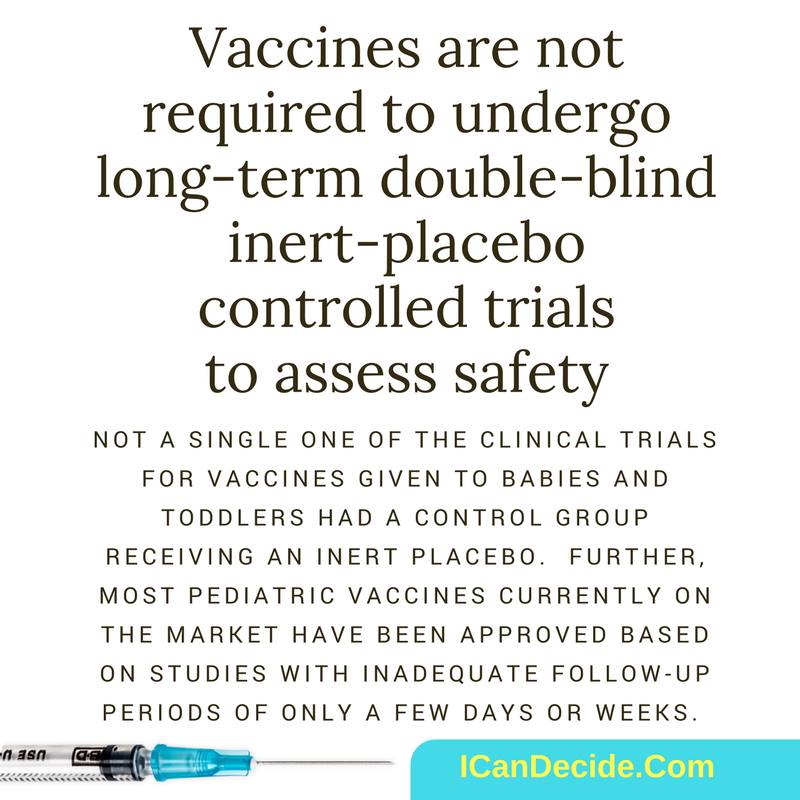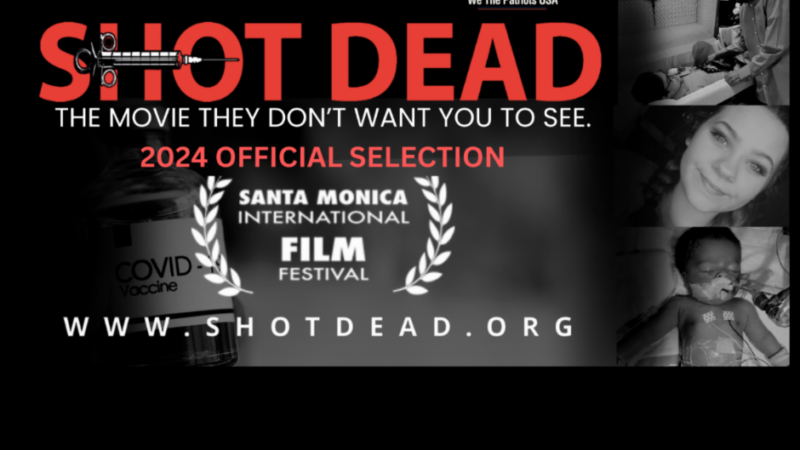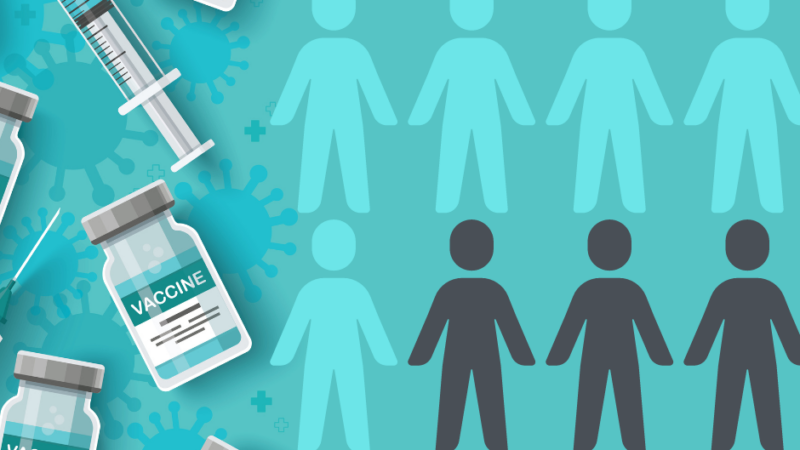VACCINE SAFETY Part 2: failure of pre licensing safety testing

HHS, through the FDA, licenses all vaccines used by the American public. All non-vaccine drugs licensed by the FDA undergo long-term multi-year doubleblind safety studies during which the rate of adverse reactions in the group receiving the drug under review is compared to the rate of adverse reactions in a group receiving an inert placebo, such as a sugar pill or saline injection.
For example:
- Enbrel’s pre-licensure trials followed subjects up to 80 months and controls received a saline injection.14
- Lipitor’s pre-licensure trials lasted a median of 4.8 years and controls received a sugar pill.15
- Botox’s pre-licensure trials lasted a median of 51 weeks and controls received a saline injection.16
And even with these long-term studies, drugs are still often recalled.
While most drugs, like the ones above, are given to sick adults, pediatric vaccines are typically given universally to babies and toddlers. And while pharmaceutical companies remain liable for injuries caused by their non-vaccine drugs, as discussed above, they have no liability for injuries caused by their vaccines.
One would therefore expect that pre-licensure safety testing for vaccines would be more rigorous than that conducted for drugs.
Unfortunately, unlike all non-vaccine drugs licensed by the FDA, vaccines are not required to undergo long-term double-blind inert-placebo controlled trials to assess safety. In fact, not a single one of the clinical trials for vaccines given to babies and toddlers had a control group receiving an inert placebo.
Further, most pediatric vaccines currently on the market have been approved based on studies with inadequate follow-up periods of only a few days or weeks.

For example, there are two Hepatitis B vaccines licensed for one day old babies in the United States – one manufactured by Merck and the other by GlaxoSmithKline. Merck’s Hepatitis B vaccine was licensed by the FDA after trials which solicited adverse reactions for only five days after vaccination.17
Similarly, GlaxoSmithKline’s Hepatitis B vaccine was licensed by the FDA after trials which solicited adverse reactions for only four days after vaccination.18
Follow-up periods of 4 or 5 days are not nearly long enough to detect possible adverse effects such as autoimmune or neurological disorders, seizures, or death. Worse is that since neither of these clinical trials used a control group, it was impossible to scientifically determine if any adverse reaction in the limited four or five day safety review period was even caused by the Hepatitis B vaccine being evaluated.
Similarly, the HiB vaccines manufactured by Merck and GlaxoSmithKline were licensed by the FDA based on trials in which adverse reactions were monitored for only three days and four days, respectively, after vaccination.19
The only stand-alone polio vaccine in the United States was licensed after a mere 48-hour follow-up period. 20
Even more amazing is that unlike every drug licensed by the FDA, the control groups in these vaccine trials did not receive an inert placebo. 21
Rather, the control group was given one or more previously licensed vaccines as the “placebo.”22
This means each new vaccine need only be roughly as safe as one (or in some cases numerous) previously licensed vaccines. Such flawed and unscientific study designs cannot establish the actual safety profile of any vaccine. The real adverse event rate for a vaccine can only be determined by comparing subjects receiving the vaccine with those receiving an inert placebo.
Yet, this study design, required for every drug, is never required before or after licensing a vaccine. It is unacceptable that the FDA licensing process for vaccines fails to assess the safety profile of each vaccine. It is also unacceptable that the FDA does not require the use of inert placebo controls to assure the integrity of even the minimal safety review conducted. As HHS’s own paid experts, the IOM, explains: “Because [vaccine] trials are primarily … for determination of efficacy, conclusions about vaccine safety derived from these trials are limited.”23

READ MORE ABOUT VACCINE SAFETY IN OUR SERIES PART 1 | PART 2 | PART 3
http://icandecide.com/white-papers/VaccineSafety-Version-1.0-October-2-2017.pdf
12 The rapid growth of CDC’s vaccine schedule is expected to accelerate since there were 271 new vaccines under development in 2013 and far more currently under development. http://www.phrma.org/press-release/medicines-in-developme nt-vaccines (listing 2,300 trials in search for “vaccines” between 2013 and 2017)
13 See Section IV below.
14 https://www.accessdata.fda.gov/drugsatfda_docs/label/2012/103795s5503lbl.pdf
15 https://www.accessdata.fda.gov/drugsatfda_docs/label/2009/020702s056lbl.pdf
16 https://www.accessdata.fda.gov/drugsatfda_docs/label/2017/103000s5302lbl.pdf
17 https://www.fda.gov/downloads/BiologicsBloodVaccines/Vaccines/ApprovedProducts/UCM110114.pdf
18 https://www.fda.gov/downloads/BiologicsBloodVaccines/Vaccines/ApprovedProducts/UCM224503.pdf
19 https://www.fda.gov/downloads/BiologicsBloodVaccines/Vaccines/ApprovedProducts/UCM253652.pdf
https://www.fda.gov/downloads/BiologicsBloodVaccines/Vaccines/ApprovedProducts/UCM179530.pdf
20 https://www.fda.gov/downloads/BiologicsBloodVaccines/Vaccines/ApprovedProducts/UCM133479.pdf
21 Ibid. (prior two footnotes)
22 Ibid.
UPDATE: HHS Never Reviewed A Single Vaccine Study in the 32 Years Charged with Monitoring Vaccine Safety






